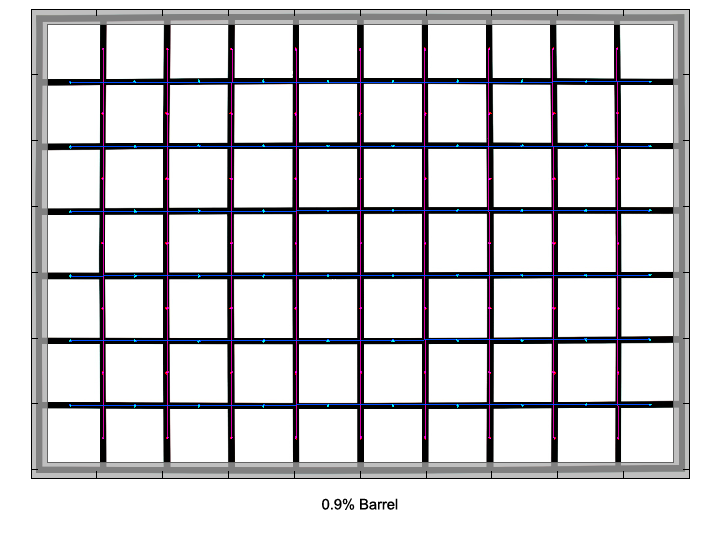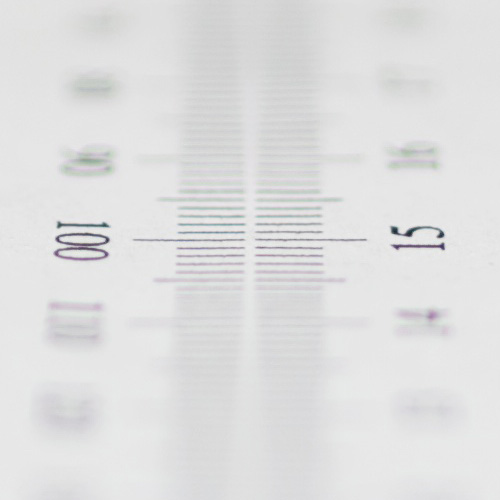|
Page 2 of 3

Distortion
The lens shows a small amount of less than 1% barrel distortion, which is rather low for this kind of lens.

The chart above has a real-world size of about 120x80cm.
Vignetting
Very fast lenses usually suffer from pronounced vignetting at large apertures, and the Sigma is no exception to this rule. Wide open, there is a significant amount of light fall-off towards the borders. As usual, stopping down reduces the amount of vignetting considerably. At f/2.8, vignetting is already down to moderate levels and from f/4 onwards it should no longer be an issue for most subjects.
We're performing our vignetting analysis based on
(uncorrected) JPEGs straight from the camera. The JPG engine of the Nikon D3x features a rather flat
gradation curve, thus has a moderate contrast characteristic, resulting in comparatively low vignetting figures - the
corresponding Canon figures are roughly 40% higher due to the more
aggressive default contrast setting.

MTF (resolution)
The lens delivers impressive resolution in our lab test. In the image center, the results are very good at the largest aperture, and increases to excellent values from f/2 onwards. At f/11 (and beyond), diffraction limits the maximum resolution again.
The borders and corners also perform on a very high level. At medium aperture settings (f/4 and f/5.6) the border even reach excellent values, too.
It is worth mentioning that the lens showed no focus shift when stopping down (residual spherical aberration).
Please note that the MTF results are not directly comparable across the different systems!
Below is a simplified summary of the formal findings. The chart shows line widths
per picture height (LW/PH) which can be taken as a measure for sharpness.
If you want to know more about the MTF50 figures you may check out the corresponding
Imatest Explanations

Chromatic Aberrations (CAs)
Chromatic aberrations (color shadows at harsh contrast transitions) are well controlled and show only moderate values of below 1 pixel at the image borders.

Bokeh
One of the primary usage scenarios for a large aperture lens is to seperate the main subject from the background. In such an image the quality of the bokeh (out-of-focus blur) is of major significance.
The lens generally delivers quite smooth bokeh, especially for a wide angle prime. In our test scene below the Sigma shows a tad of nervousness in the transition zone. During our field tests we noticed this also at medium aperture settings with subjects in the distant background (see the sample images on the next page).
Thanks to 9 rounded aperture blades, background highlights retain their circular shape throughout the whole aperture range, except towards the image corners, where they are cut off a little at one side due to mechanical vignetting. There is almost no outlining in the disks formed by highlights, in fact the blur is evenly distributed.

Bokeh Fringing / Longitudinal Chromatic Aberrations (LoCA)
LoCAs (non-coinciding focal planes of the various colors) are a common issue with relatively fast glass. As you can
notice below the halos have different colors - magenta (red + blue) in front of the focus point
and green beyond. Truly "apochromatic" lenses don't show LoCAs but these lenses are very rare especially
below 100mm. Unlike lateral lateral CAs, LoCAs cannot easily be fixed in post processing.
Typical for most fast primes, especially ultra fast ones, the Sigma shows some amount of bokeh fringing at large aperture settings, which can of course be reduced by stopping down.
In addition, these shots also illustrate that there is no focus shift when stopping down, as it was already mentioned in the MTF section.
|
Move the mouse cursor over the f-stop marks below to observe the respective LoCAs
|
| f/1.4 |
f/2 |
f/2.8 |
f/4 |
f/5.6 |
|

|
|